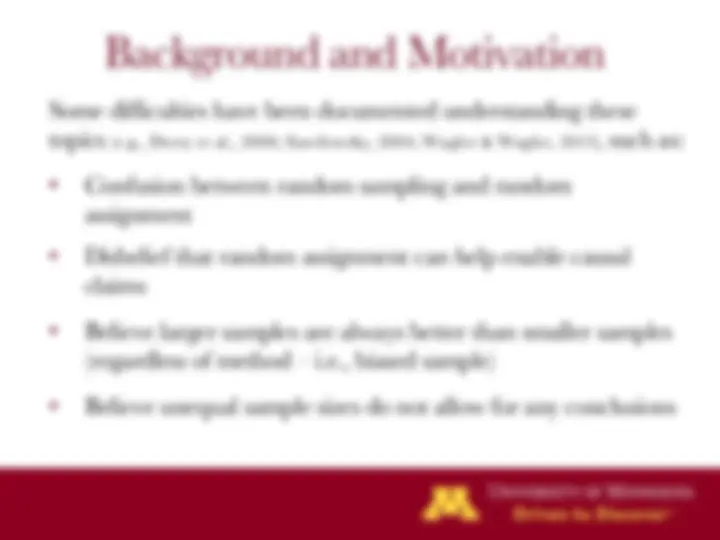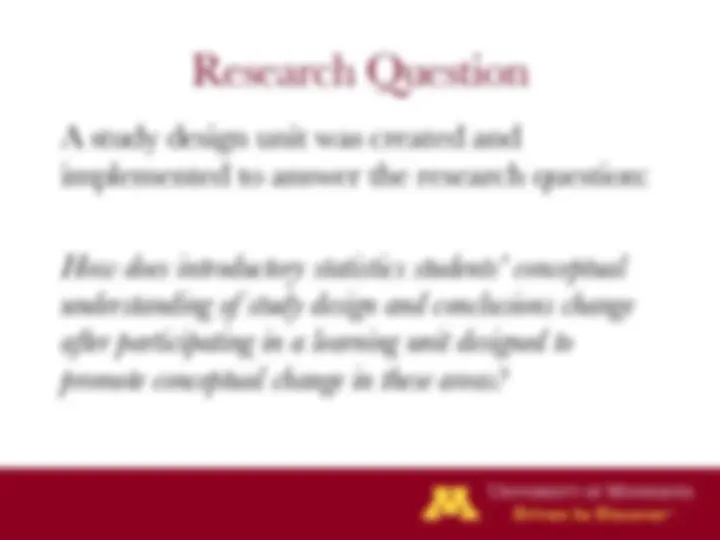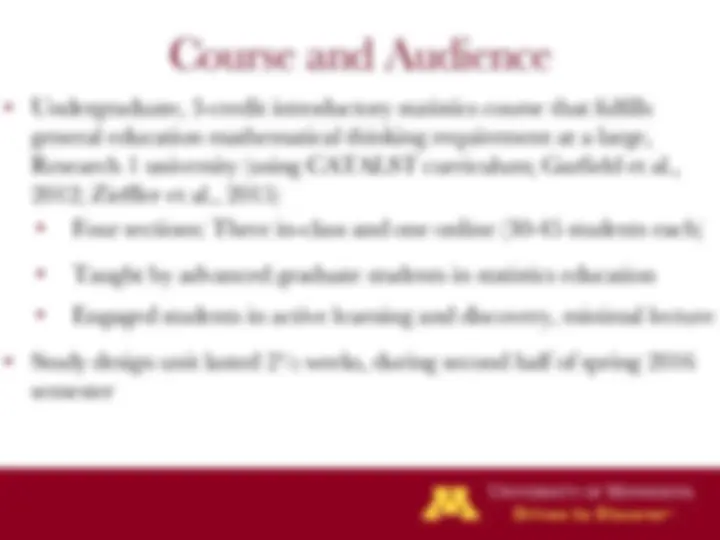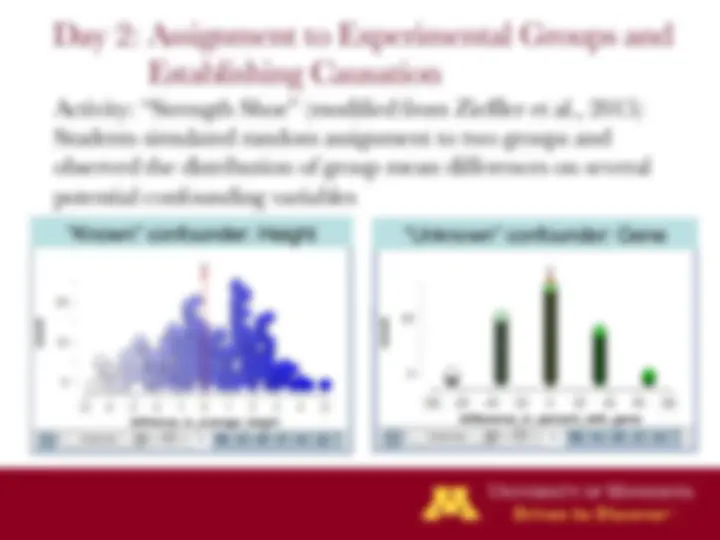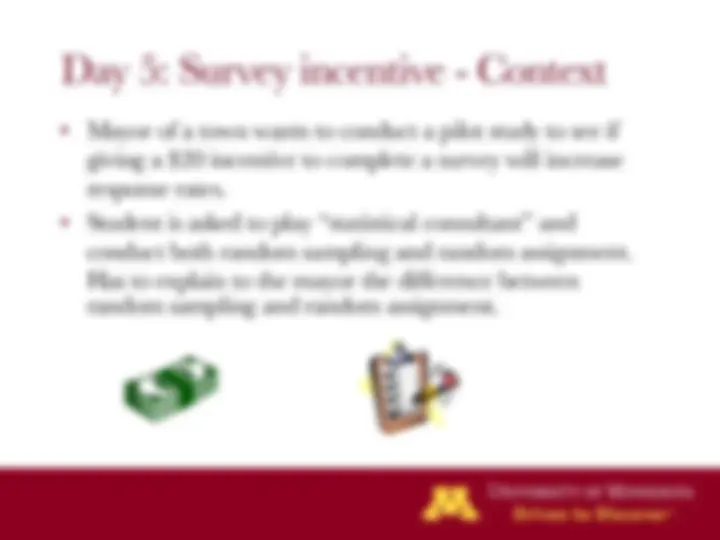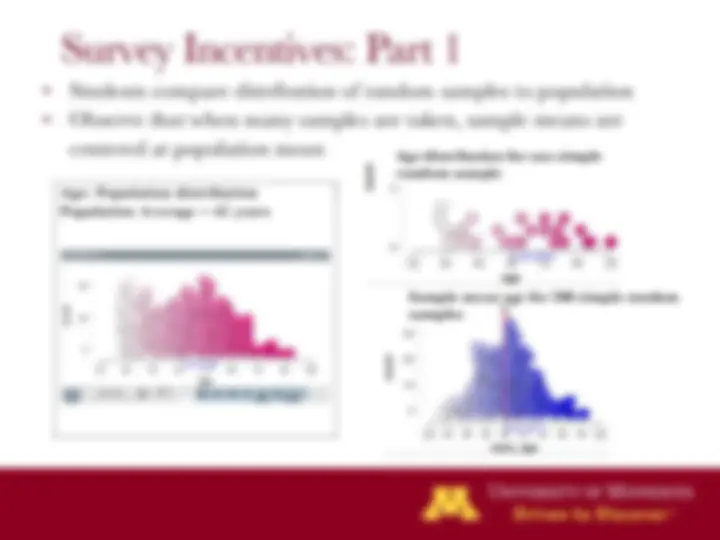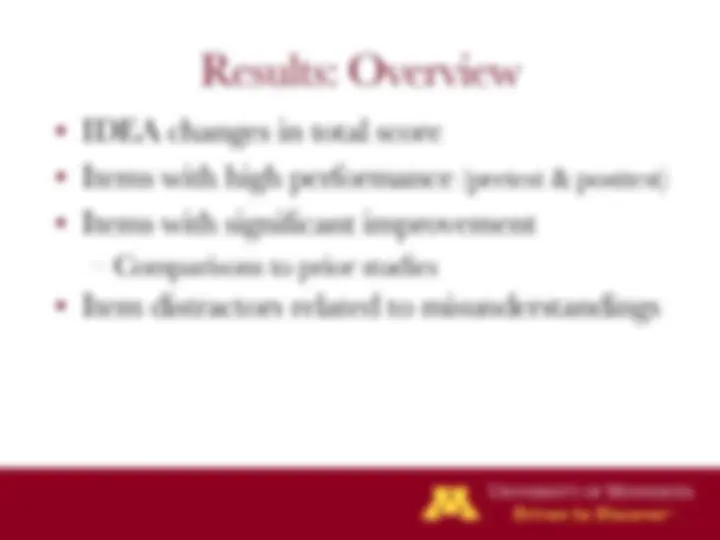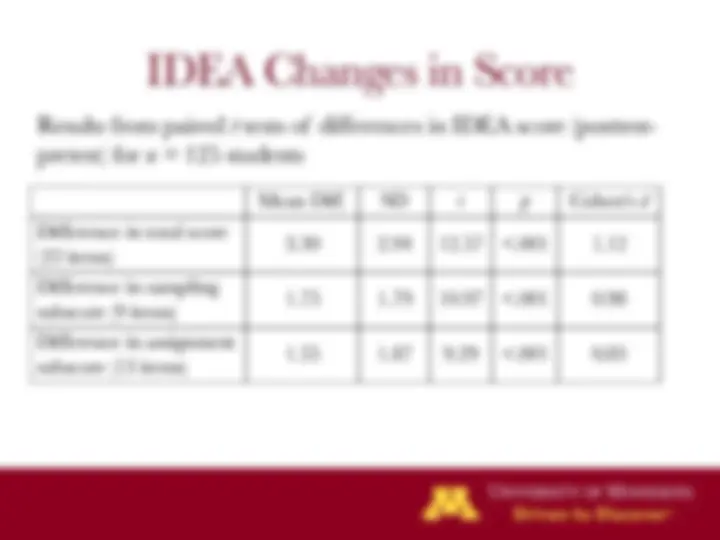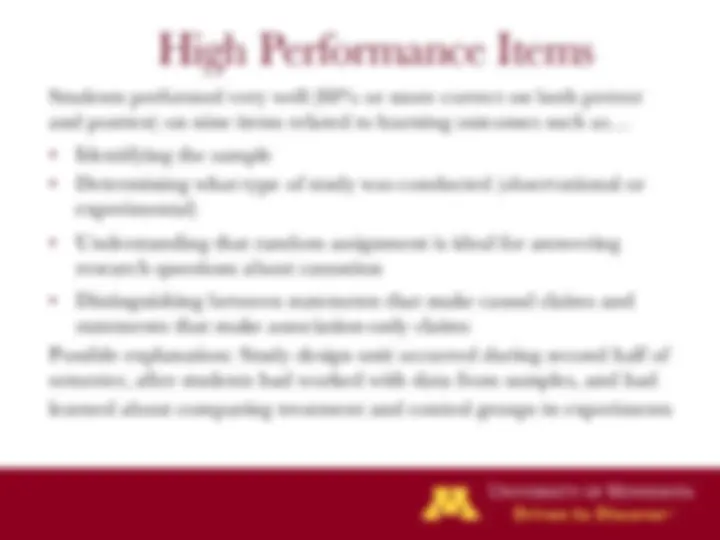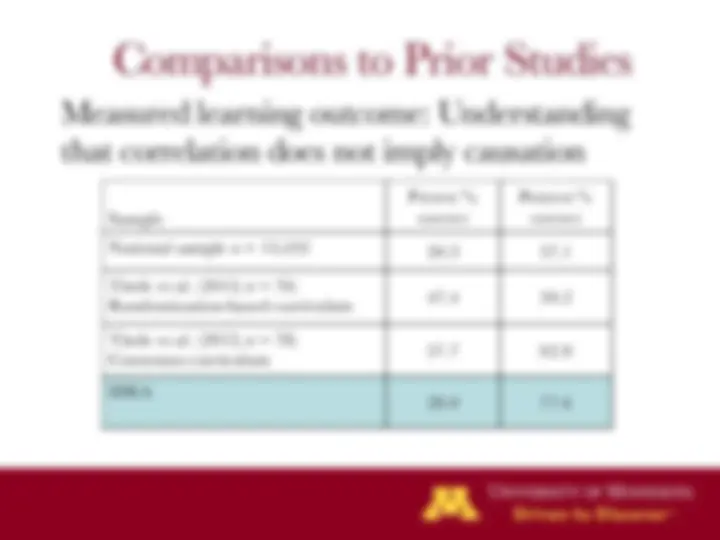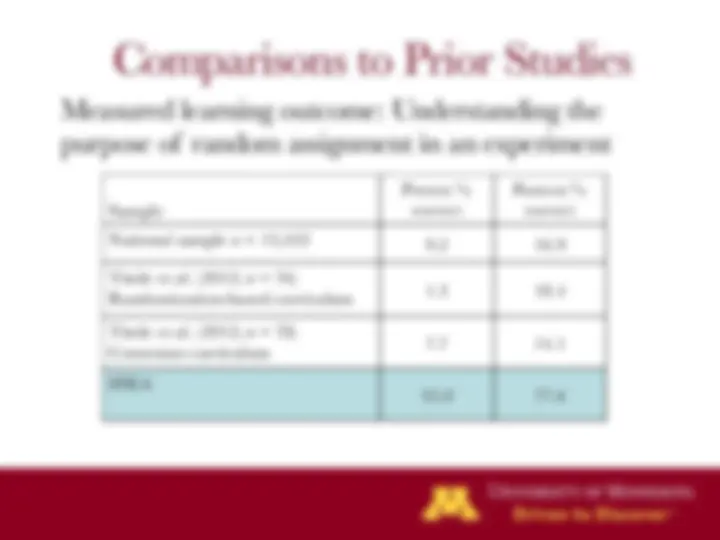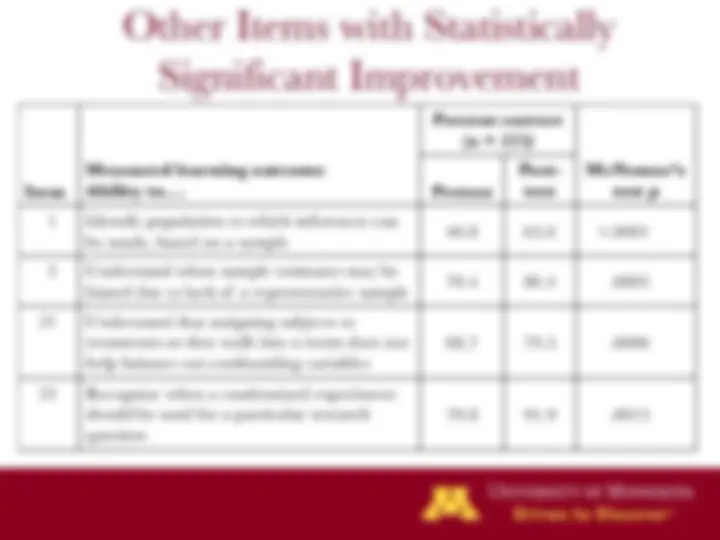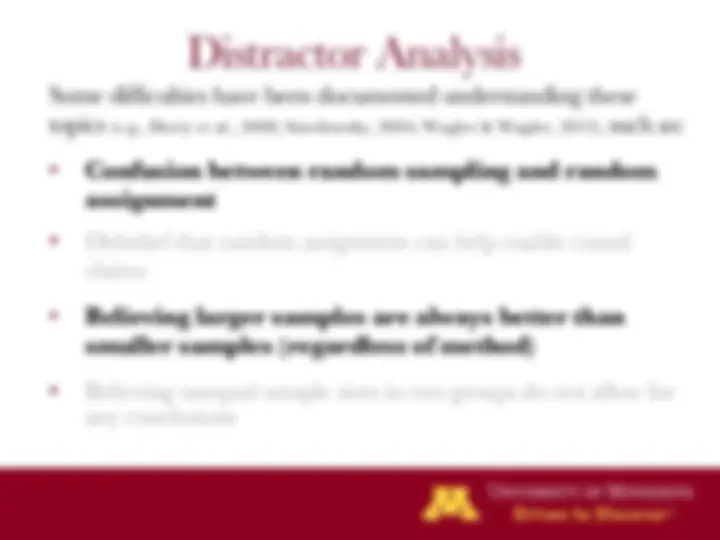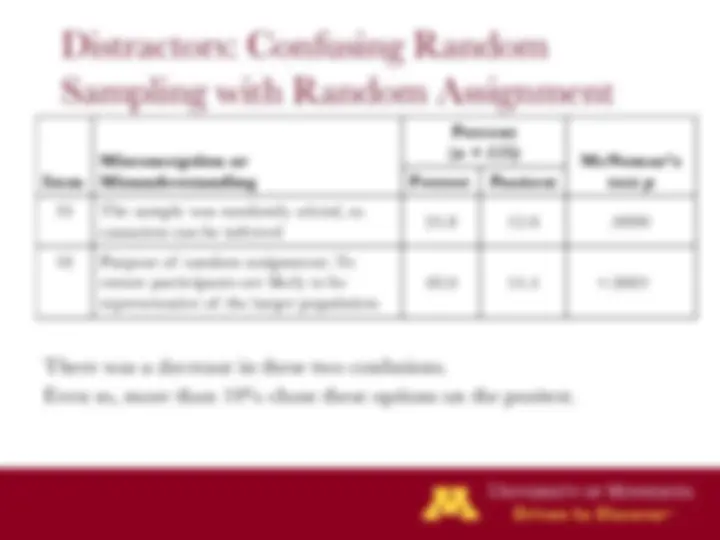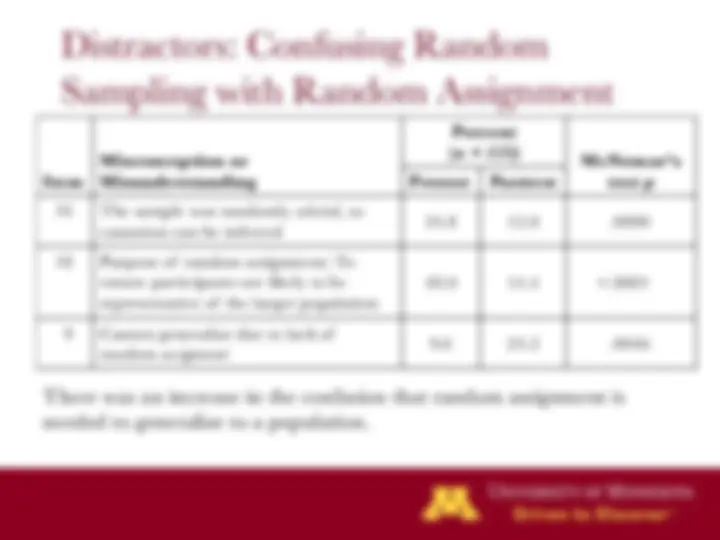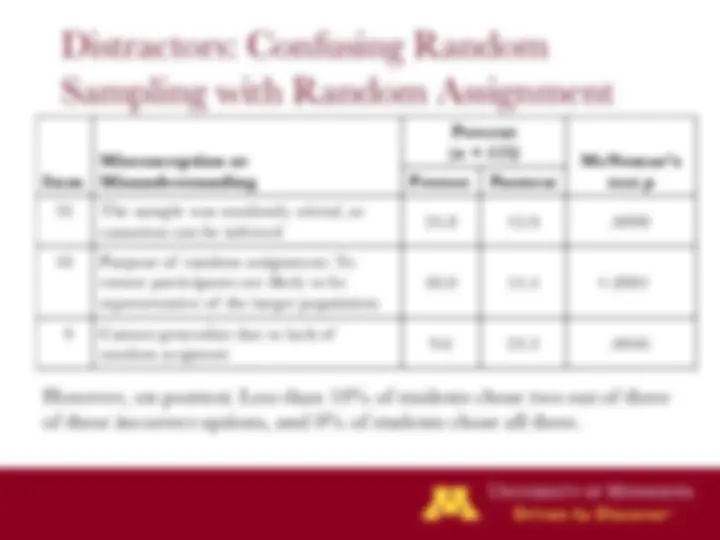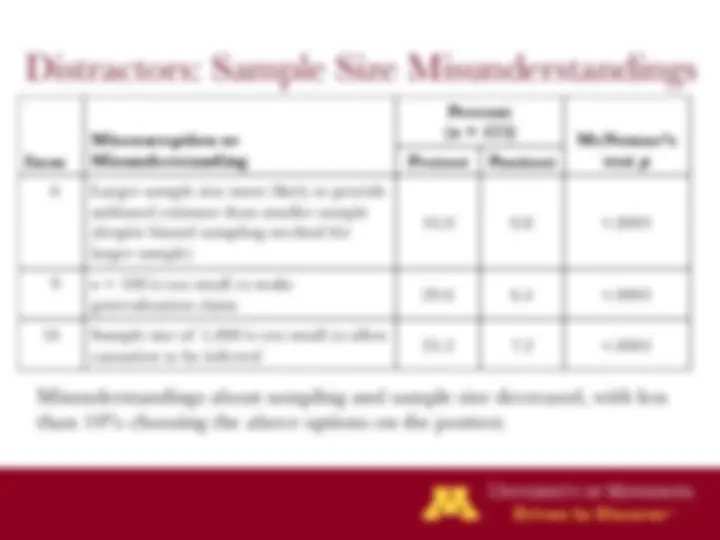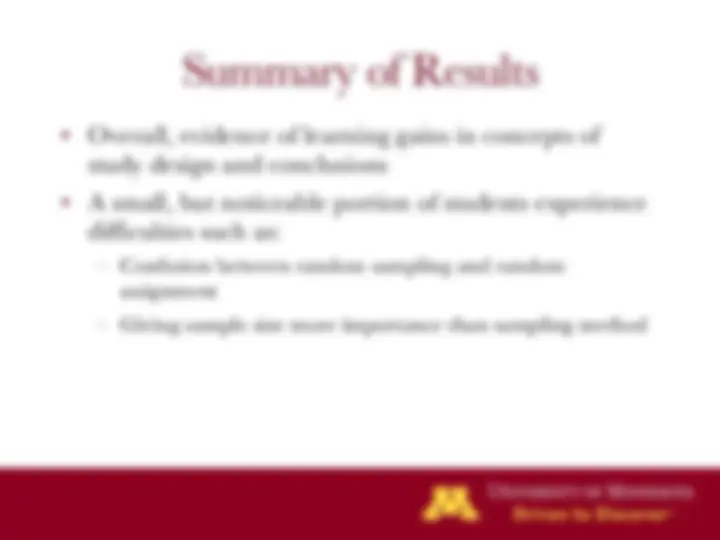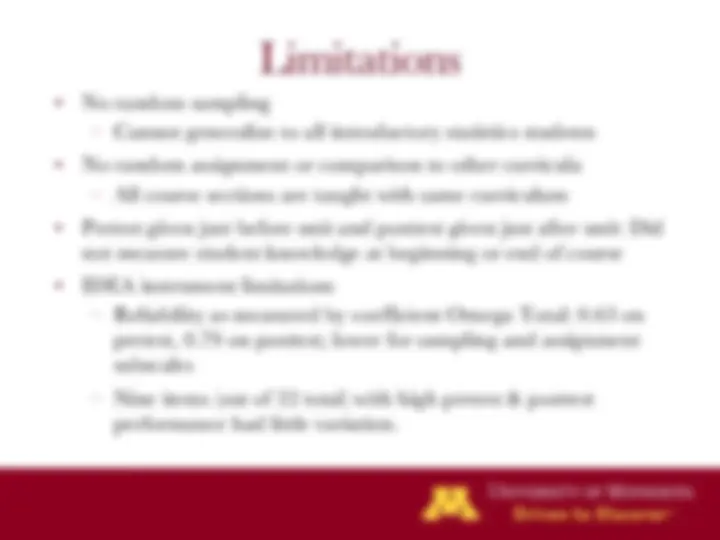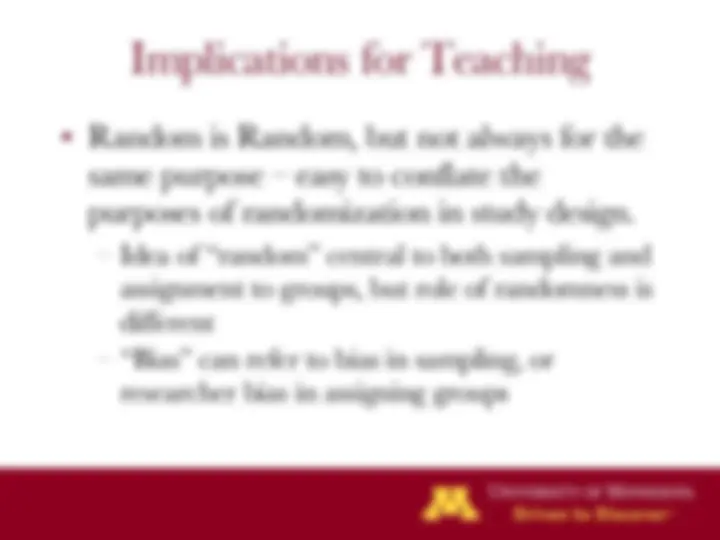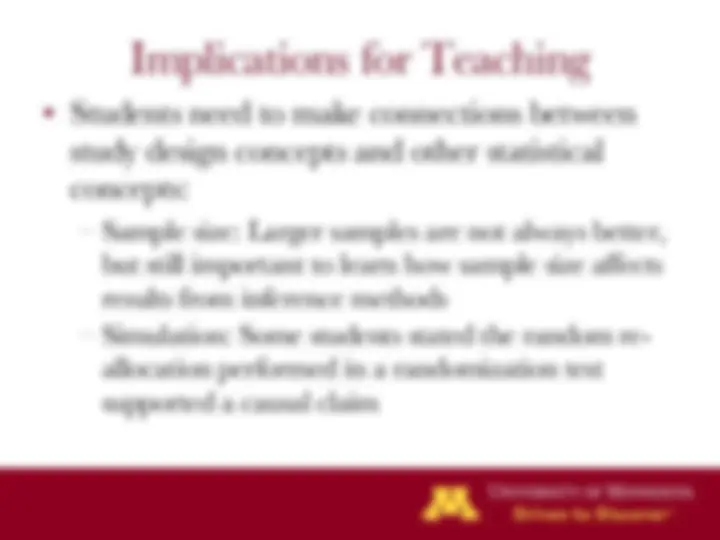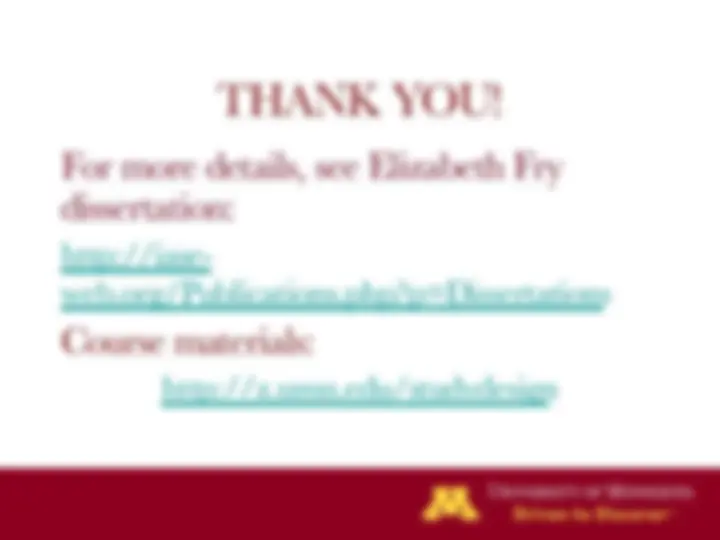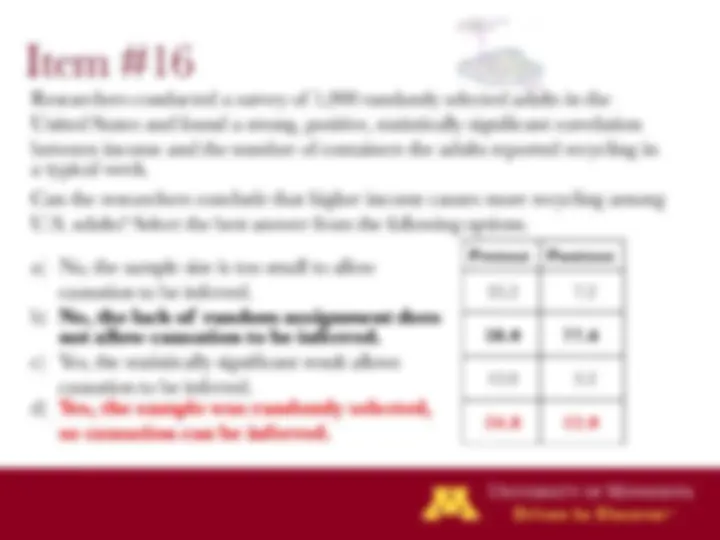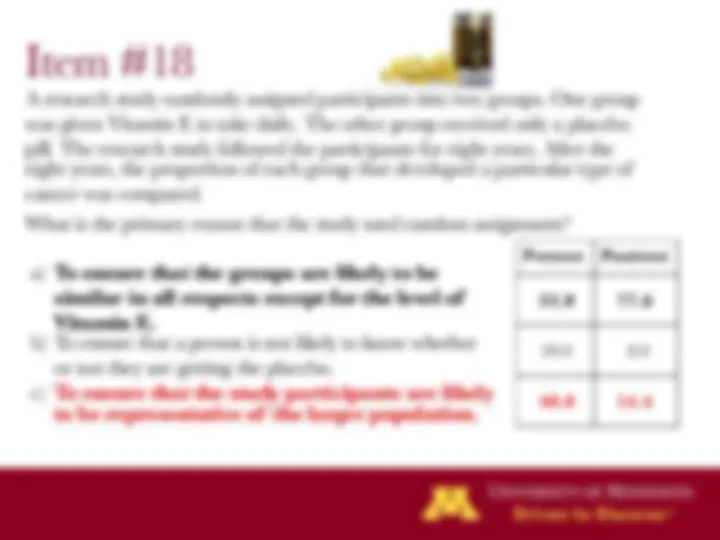Download Understanding Study Design: Case Study on Intro Stats Students' Conceptual Change and more Study notes Statistics in PDF only on Docsity!
Random is Random: Helping
Students Distinguish Between
Random Sampling and
Random Assignment
Robert delMas
Elizabeth Brondos Fry
Department of Educational Psychology
Background and Motivation
According to statistics education recommendations (e.g.,
GAISE, 2016), students should understand the following
about the role of randomness in study design:
• Random sampling tends to produce representative
samples, allowing for generalization to a
population.
• Random assignment tends to balance out
confounding variables between groups, helping to
enable cause-and-effect conclusions.
Research Question
A study design unit was created and
implemented to answer the research question:
How does introductory statistics students’ conceptual
understanding of study design and conclusions change
after participating in a learning unit designed to
promote conceptual change in these areas?
Course and Audience
• Undergraduate, 3-credit introductory statistics course that fulfills
general education mathematical thinking requirement at a large,
Research 1 university (using CATALST curriculum; Garfield et al.,
2012; Zieffler et al., 2015)
• Four sections: Three in-class and one online (30-45 students each)
• Taught by advanced graduate students in statistics education
• Engaged students in active learning and discovery, minimal lecture
• Study design unit lasted 2½ weeks, during second half of spring 2016
semester
Day 1: Sampling Methods and Unbiased Estimation
Activity: “Sampling Countries”
Students contrasted central tendency of average life expectancy from
convenience samples ( n = 20) with simple random samples ( n = 10) of
countries
Convenience samples, n = 20 Random samples, n = 10
Population mean
life expectancy
Day 2: Assignment to Experimental Groups and
Establishing Causation
Activity: “Strength Shoe” (modified from Zieffler et al., 2015)
Students simulated random assignment to two groups and
observed the distribution of group mean differences on several
potential confounding variables
“Known” confounder: Height
“Unknown” confounder: Gene
Survey Incentives: Part 1
- Students compare distribution of random samples to population
- Observe that when many samples are taken, sample means are
centered at population mean
Age distribution for one sim ple
random sam ple
Sam ple m ean age for 200 sim ple random
sam ples
Survey Incentives: Part 2
- Students compare groups within a random assignment
- Observe that a single random assignment produces similar groups
(but not identical) and group mean differences tend to balance out
across many random assignments.
Differences in m ean incom e for m any
random assignm ents
Single random assignm ent
Results: Overview
• IDEA changes in total score
• Items with high performance (pretest & posttest)
• Items with significant improvement
– Comparisons to prior studies
• Item distractors related to misunderstandings
IDEA Changes in Score
Mean Diff. SD t p Cohen’s d
Difference in total score
(22 items)
Difference in sampling
subscore (9 items)
Difference in assignment
subscore (13 items)
Results from paired t- tests of differences in IDEA score (posttest-
pretest) for n = 125 students
Items with Most Improvement
Item
Measured learning outcome:
Ability to understand…
Percent correct
( n = 125)
McNemar’s
test p Pretest Posttest
16 Correlation does not imply causation
18 Purpose of random assignment in an
experiment
3 What it means to make an appropriate
generalization to a population, using
sample data
6 Small random sample is preferable to a
larger sample gathered with a biased
sampling method.
After adjusting for multiple comparisons, αc =.
Comparisons to Prior Studies
- The two IDEA items that showed the most improvement were
slightly modified from items on the Comprehensive Assessment
of Outcomes in Statistics (CAOS; delMas et al., 2007).
- Performance on IDEA was compared with performance in
similar CAOS items from:
- A national sample of 13,432 undergraduate introductory
statistics students enrolled in U.S. universities (2005-2017)
- Two samples of introductory statistics students at a small
college (Tintle et al., 2012):
• Randomization-based curriculum ( n = 76)
• Consensus curriculum ( n = 78)
Measured learning outcome: Understanding the
purpose of random assignment in an experiment
Sample
Pretest %
correct
Posttest %
correct
National sample n = 13,
Tintle et al. (2012; n = 76)
Randomization-based curriculum
Tintle et al. (2012; n = 78)
Consensus curriculum
IDEA
Comparisons to Prior Studies
Other Items with Statistically
Significant Improvement
Item
Measured learning outcome
Ability to.…
Percent correct
( n = 125)
McNemar’s
test p Pretest
Post-
test
1 Identify population to which inferences can
be made, based on a sample
5 Understand when sample estimates may be
biased due to lack of a representative sample
21 Understand that assigning subjects to
treatments as they walk into a room does not
help balance out confounding variables
22 Recognize when a randomized experiment
should be used for a particular research
question

